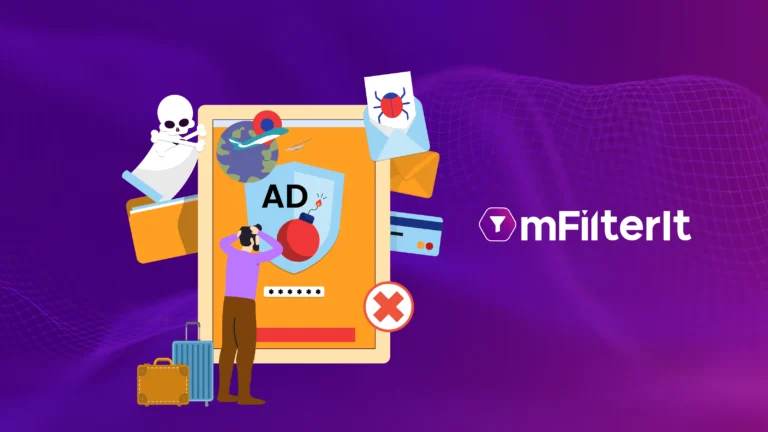In explaining brand safety, people often use the example of how a display campaign can go wrong. An example is an ad for a family-oriented brand appearing on a site with adult content. As another example, an airline advertisement will run alongside a news article about a plane crash.
An ad inserted in such a way could start a public relations firestorm and ultimately damage the brand’s reputation. The purpose of a brand safety solution is to prevent such things from happening. Although these examples are vivid and easy to understand, they may make brand safety sound simpler than it is.
An online survey found that 51% of millennials and Gen Xers are four times less likely to purchase and three times less likely to recommend a brand when they see ads in unsafe environments, even if the placement was not the brand’s fault. Unsafe ad placement can have lasting negative effects on your customer.
It is more difficult than ever to protect brand safety. Brand safety systems need to evolve along with new media formats and address the concerns unique to each. In fact, it might be time to put an end to some myths and misconceptions about brand safety, including what exactly brand safety entails, who is responsible for it, and how to protect it.
How to Combat Brand Safety Myths?
Myth 1: Global, English Based Brand Safety Analysis Provide Regional Context
There are 22 official languages in India, but only 5 are supported by Google. 95% of the videos consumed are in regional languages, according to a recent study. If this issue is not resolved, the regular blacklisting tools will become redundant.
Brand safety issues may be universal, but each country and region has its own culture and expectations, making it unique and subjective. One region’s inappropriate and unsafe behavior may be acceptable in another’s culture. Due to these concerns, brands usually implement contextual targeting measures like keyword blocking and URL blocklists to protect their brands.
These strategies, however, lack the flexibility and control necessary to safely use programmatic advertising today. Therefore, they’re ineffective. So why? Keywords and URL blocking rely on definitions of words to categorize content and the associated inventory as “safe” or “unsafe.”
Additionally, these approaches often lead to over-blocking of safe content or incorrectly categorizing harmful content as safe, leading to both loss of money and increased risks.
In addition, publishers struggle to monetize inventories while covering topical and newsworthy events. Regionalization is the new buzzword for solving brand safety concerns, and that’s what we need to understand. When it comes to analyzing brand safety, regionalization influences contextuality. Brand ads are also placed differently based on the target audience in a particular region, which is an important part of contextuality.
Myth 2: Blacklisting Keywords is Blocklisting
Keeping brands safe means more than blacklists
The pandemic era has made brand safety a major concern for brands and marketers alike. Ads should not be displayed next to content that deals with morbidity, violence, hate speech, or other derogatory content. Blacklisting certain keywords to ensure that the ads are not displayed next to objectionable content is one of the most common ways to deal with such issues.
It is not possible to successfully advertise and protect brands through keyword blacklisting. Keyword blacklisting assumes that the platform already knows the context of the content. It may be true for typical English-focused content, but regional content is a whole different story. The platforms do not support regional languages (especially in a diverse country like India) and because of that, keyword-based blacklisting does not work.
For example, what if the terrorists use ‘bread’ instead of ‘bomb’ in their meta tags and descriptions and your ads show up next to videos of violent terrorist activities? In this way, blacklisted keywords are bypassed. Content creators avoid using unsafe tags when they submit their content to YouTube to get better marketing campaigns. Again, this defeats the purpose of keyword-based blacklisting. We need context-based blacklisting, which should be constantly updated based on the most recent news story and relevant to AI-powered algorithms. By doing so, the campaign’s effectiveness will be maximized while ensuring brand safety.
Myth 3: Brand Safety Is Not My Issue
This is wrong! Regardless of the industry, vertical, or scale of the enterprise, brand safety is imperative. In short, no matter what scale the enterprise functions at, no matter the industry it serves, one instance of unsafe advertising can destroy the company’s reputation forever. The modern consumer is more educated and aware than most marketers. Due to the powerful voice consumers have through social media, one negative comment or tweet can tarnish a brand’s reputation forever, thus compromising the brand’s safety.
Even though the scale of the operation is small, digital advertising helps increase brand awareness. Within the same ecosystem are consumers who consume a wide variety of content every day. Imagine you are a brand that offers baby products, and one of your ads appears within an inventory that contains material that is surrounded by adult content.
What’s next for you? For quite some time, there has been the misconception that brand safety is only for B2C companies. Isn’t it possible, though, that a b2b company can be negatively affected by the complex challenges the advertising ecosystem presents? According to a recent study conducted in Singapore, 7 out of 10 consumers believe that advertising with misleading content is the brand’s responsibility. Taking this into consideration, the detrimental impact of not addressing the issue rests with the brand.
Myth 4: Brand Safety Has Nothing to Do with ROI and is an Unnecessary Cost
Please reconsider! The majority of the time, unsafe content will also perform poorly for your campaign. Someone who is going to adult content is unlikely to click on your ad and go to your landing page! In general, ads on unsafe inventory will underperform and degrade the ROI of your campaign. Thus, by addressing brand safety (and protecting your brand), you also get the benefit of improved campaign performance and improved ROI.
This is a significant contribution to your business case for brand safety analysis and can help advertisers consider BS tools as a performance-enhancing tool that can justify their costs easily. 1 out of 3 potential customers decide not to engage because of concerns about brand safety.
Advertising in brand-safe environments is believed to have a significant impact on key measures such as audience quality (83%), brand equity (82%), and brand lift (79%). More than three-quarters believe brand safety impacts return on investment, or ROI (77%).
Myth 5: Advertisers Are in Control of All the Channels
It was recently reported that YouTube served ads for major advertisers next to Nazi videos, pedophilia videos, and propaganda videos. And the result? Known advertisers such as Netflix and Adidas stopped spending on YouTube and boycotted the platform. Is Facebook or Twitter meddling in the US presidential election or fake news propaganda on these platforms familiar to you? As a result of such instances of channel abuse, brand safety has never been more crucial.
To ensure consumers trust your brand, it is important to consider the medium through which information is disseminated. A correlation exists between audience quality, brand safety, and the price paid. All forms of safe branding are equally important. Advertisers often choose publishers with high-quality audiences and engagement in similar instances. Due to the dynamic nature of the news cycle, advertisers are no longer in control of where and when their ads appear. According to one report, the ‘Incredible India’ campaign was shown next to stories about the country’s lack of hospital beds and oxygen shortage. So, who’s at fault here? The brand? The advertiser? The publisher? Digital advertising has exploded in recent years. Networks of fake websites deceive algorithms into believing they are real publications.
Even ads that do reach real humans are not likely to be seen by the people who the advertiser hopes to reach. Digital advertising was intended to achieve this. However, there are increasing indications that this promise was the biggest lie of all.
Nielsen found that only 25% of the ads in an income-adjusted campaign reached the right households. Approximately 65% of location-targeted ad spend was wasted. Several large advertisers have reduced their digital ad budgets – Procter & Gamble (cut $200M), JPMorgan Chase (slashed ad reach by 99%), Uber (cut $200M), and eBay (cut $100M) – with little to no measurable impact on their business.



